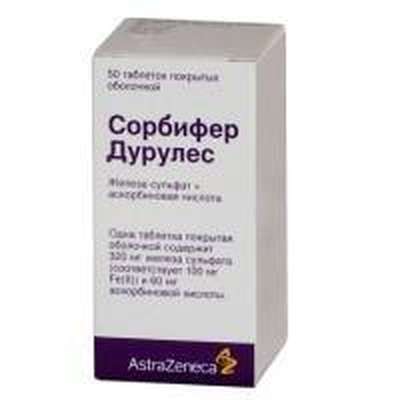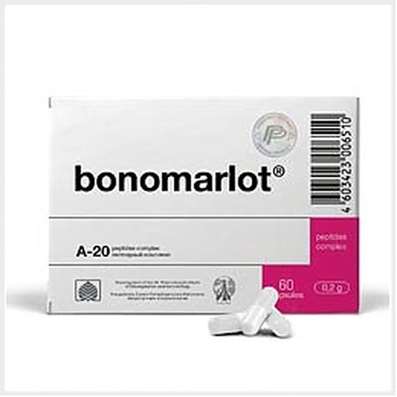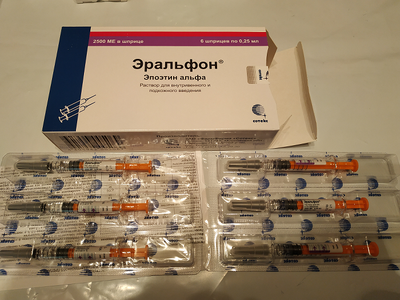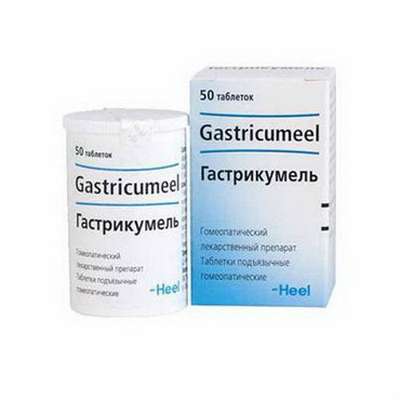Instruction for use: Saizen
I want this, give me price
ATX Code H01AC01 Somatropin
Active substance: Somatropin
Pharmacological group
Growth hormone [Hormones of the hypothalamus, pituitary gland, gonadotropins and their antagonists]
Nosological classification (ICD-10)
E22 Hyperfunction of the pituitary gland
Dysfunction of growth hormone secretion, Hyper secretion of the anterior lobe of the pituitary gland
E34.3 Low-growth [dwarfism], not elsewhere classified
Growth retardation, Growth retardation in children, Dwarfism, Nanism hypophyseal, Inadequate endogenous growth hormone, Growth Hormone Deficiency, Pituitary Nanism, Low height, Growth disorder, Disturbance of the growth process, Pituitary dwarfism, Disruption of endogenous hormone secretion with growth retardation, Growth disorders, Naniz disproportionate, Nanism associated with external factors
Composition
Lyophilizate for the preparation of a solution for subcutaneous administration 1 vial.
active substance:
Somatropine 8 mg *
Auxiliary substances: sucrose; phosphoric acid; Sodium hydroxide
The solvent cartridge contains 1.37 ml of a 0.3% solution of metacresol in water for injection
After mixing the contents of the vial with the solvent, a ready-made injection solution is obtained, 1 ml of which contains 5.83 mg of somatropin
* 1 mg corresponds to 3 IU
To the beginning ^
Description of dosage form
Lyophilized powder or porous mass of white or almost white color.
pharmachologic effect
Pharmacological action - somatotropic.
Pharmacodynamics
SizenŽ is a recombinant human growth hormone obtained by genetic engineering using a mammalian cell line. Identical in its composition and action to the pituitary hormone human growth - somatropin (single-chain polypeptide, consisting of 191 amino acid residues).
It has anabolic and anti-catabolic properties, affecting not only growth, but also metabolic processes.
Influencing the epiphysis of the tubular bones, stimulates the growth of the bones of the skeleton.
Regulates protein metabolism, stimulates the transport of amino acids into the cell and protein synthesis.
Pharmacokinetics
Pharmacokinetics in doses not exceeding 8 IU (2.67 mg) is linear, at higher doses linearity is disrupted without any clinical manifestations. Absolute bioavailability with n / k introduction is 70-90%. Cmax in the blood is observed after 4 hours and returns to the initial level 24 hours after the administration. The effect of cumulation is not observed.
After IV introduction, Vd is 7 l / kg, the total clearance is 15 l / h.
Metabolized in the kidney and liver.
It is excreted with bile. T1 / 2 is 2-4 hours.
Indications
Growth retardation in children due to insufficiency of growth hormone;
Growth retardation in girls with gonadal dysgenesis (Shereshevsky-Turner syndrome);
Growth retardation in children in the prepubertal period due to chronic renal insufficiency;
Growth retardation in children up to 4 years of age and older with a history of intrauterine growth retardation;
Confirmed congenital or acquired growth hormone deficiency in adults (as a substitute therapy).
Contraindications
Increased sensitivity to somatropin and / or to any other component of the preparation or to the metacresol contained in the solvent;
Signs of active malignant neoplasm (antitumor therapy must be completed before treatment with somatropin);
Pregnancy and the period of breastfeeding.
With caution: diabetes, intracranial hypertension, hypothyroidism.
pregnancy and lactation
At present, there is insufficient data on the safety of the use of growth hormone during pregnancy, and therefore it is not recommended to use SaizenŽ during this period.
There is evidence of the possible secretion of somatropin with breast milk. If you need to use SizenŽ during breastfeeding, breast-feeding should be discontinued.
Side effects
Like other SizenŽ medications, it may have side effects, but most patients tolerate the drug well.
In the process of therapy in some cases, there may be local reactions in the field of injection: soreness, hyperemia, swelling, pruritus.
Very rarely, some patients may have antibodies to somatropin.
It is rare to develop benign intracranial hypertension (severe headache, nausea, vomiting).
Epiphysis of the head of the femur can be observed.
Adult patients with hormone replacement therapy had fluid retention in 10% of cases with development of peripheral edema, joint pain, muscle pain and paresthesia, which appeared at the beginning of treatment and usually disappeared during treatment.
In adult patients with growth hormone deficiency, which was diagnosed in childhood, fewer side effects are observed compared to those who have a deficiency of growth hormone in adulthood.
Attention! The following side effects have been described in the literature with the use of somatropin, however, to date, they have not been observed with SaizenŽ: weakness, fatigue, gynecomastia, optic disc swelling (usually seen during the first 8 weeks of treatment, Patients with Shereshevsky-Turner syndrome), pancreatitis (abdominal pain, nausea, vomiting), otitis media and hearing impairment (in patients with Shereshevsky-Turner syndrome), subluxation of the hip in children (limping, pain in the thigh and knee), leukemoid s reaction, accelerating the growth of pre-existing nevus (possible malignancy) progression of scoliosis (in patients with overgrowth), elevated levels of inorganic phosphate in the blood, parathyroid hormone and alkaline phosphatase activity.
Allergic reactions: skin rash, itching.
If these or any other undesirable effects occur, be sure to inform the doctor.
Interaction
Currently, drugs that are incompatible with SaizenŽ are not known. Simultaneous application of GCS can suppress growth and thus inhibit the growth effect of Sizen. The effectiveness of the drug (with respect to final growth) may also be influenced by concomitant therapy with other hormones, for example gonadotropin, anabolic steroids, estrogens and thyroid hormones.
Dosing and Administration
Treatment should take place under conditions of systematic monitoring by a doctor who has sufficient experience in diagnosing and treating patients with growth hormone deficiency or with Shereshevsky-Turner syndrome.
The preparation SizenŽ in a dosage of 8 mg (24 IU) is intended for repeated subcutaneous administration.
The dosing schedule is determined by the doctor individually for each patient, taking into account the body surface area of the patient (PPT) and body weight (MT).
SaizenŽ is recommended for administration in the evening. Depending on the indications, the following schemes are recommended:
Children
Growth retardation caused by a deficiency of growth hormone secretion: 0.7-1 mg / m2 PPT per day or 0.025-0.035 mg / kg per day subcutaneously.
Growth disorder in girls with gonadal dysgenesis (Shereshevsky-Turner syndrome): 1.4 mg / m2 of PPT per day or 0.045-0.05 mg / kg per day subcutaneously.
If a girl simultaneously takes non-androgenic anabolic steroids, the intensity of growth can be increased.
Retardation of growth in children in the prepubescent period, caused by chronic renal failure: 1.4 mg / m2 of PPT per day or 0.045-0.05 mg / kg per day subcutaneously.
Retardation of growth in children by the age of 4 years and older with intrauterine growth retardation in history: 1 mg / m2 of PPT per day or 0.035 mg / kg per day subcutaneously.
Treatment is discontinued after the patient's growth reaches values that correspond to the growth of an adult person or after the epiphyseal growth zones are infected.
Adults
Treatment is recommended to begin with a low dose of 0.15-0.3 mg per day subcutaneously. The dose should be increased strictly under the supervision of the doctor.
The recommended final dose usually does not exceed 1 mg per day. In general, small doses are effective. In elderly patients, the dose should be reduced.
Instructions for patients on the preparation and use of the drug
The injection solution is prepared using a preparation (dry matter in a vial) and the attached bacteriostatic solvent containing a 0.3% solution of metacresol in water for injection using the Click. The prepared solution, intended for subcutaneous injection, should be clear and free of visible particles. The use of a solution containing visible particles for injections is not allowed. The prepared solution contains 8 mg of SizenŽ preparation (5.83 mg / ml).
Patients should receive detailed instructions on how to properly perform the procedure for dilution of the drug. You should carefully read the instructions for using the Click.
Children should prepare the solution under the guidance of adults.
If there are questions regarding the preparation of the solution, you should consult a doctor, nurse or pharmacist.
1. It should be ensured that the device for the preparation of the Click solution is collected, check for the presence of the SaizenŽ vial, a sterile transitional cannula, and a solvent cartridge.
2. Check the presence and integrity of the control visible signs on the Click and Cap. If they are broken, do not use the device, it must be returned to the pharmacist or doctor.
3. Prepare a clean surface and spread out on it all that is required to prepare a solution for injection.
4. Wash hands with soap and water.
How to prepare a solution of the drug?
A colored insert with drawings illustrating the procedure for preparing the solution using the Click.izi device is embedded in the pack.
1. Place the device for mixing. Click vertically on a flat surface with the vial down and cap up.
2. Press the cap all the way in (attention: the control visible sign on the Click. Will now be broken).
3. Turn the cap slowly clockwise until the green indicator moves to the vertical window.
4. Continue slowly pressing on the cap until all the solvent has passed from the cartridge to the vial (attention: the control visible sign on the cap will now be broken). It is very important to press the cap slowly to prevent the formation of bubbles. It should be ensured that all the solvent has passed into the vial.
5. Dissolve the powder in the solvent with gentle circular motions. Allow the solution to stand until the powder completely dissolves. Attention: it is forbidden to sharply shake. Foam or bubbles may form.
6. Flip the Click. (Bottle up). Slowly pull the cap down to the stop and then pull slowly until the solution completely moves back into the cartridge.
Make sure that no more than 1-2 drops of solution remain in the vial. If more than 1-2 drops of solution remain in the vial, slowly push the cap back on until the solution goes back into the vial and shake it lightly. Then re-move the solution to the cartridge as described above.
If it gets into the air cartridge, it must be removed by slowly pressing the cap.
Caution: To prevent air from entering the cartridge, pull off the cap slowly.
7. While holding the Click in the position with the bottle up, unscrew the cap and remove it. While holding the Click in the same position, remove the cartridge from the prepared solution from Click.
8. Carefully remove the outer label from the cartridge.
Write the date of preparation of the solution on the internal label of the cartridge.
Recycle Click in accordance with accepted rules.
The cartridge containing the prepared SaizenŽ solution is ready for use with injectors that inject the drug. The injectors are supplied separately and a separate instruction is attached to them.
Injections should be made in different parts of the body. Do not administer the medication to places where swelling, tight knots, dents, or pain has occurred; All symptoms should be reported to a doctor or other health care provider.
The skin at the injection site may be washed with soap and water.
What to do if a dose is missed or a large dose is administered?
If a dose is missed or an excessive amount of SaizenŽ is administered, the patient should be informed of this to the doctor, since minor changes in the recommended dose may be required to compensate for the disorder. The administration of an increased dose will result in a change in the glucose level in the patient's blood, while the patient may experience shivering and dizziness. If you take an increased dose for a certain period of time, this will cause excessive growth of bones, mainly the bones of the hands, feet and jaw.
Overdose
Symptoms: There are no reports of acute overdose cases. Nevertheless, the use of a dose that exceeds the recommended dose can lead to hypoglycemia. With prolonged overdose, signs and symptoms characteristic of excess growth hormone - active growth of bone tissue, especially of the hands, feet and jaw, as well as the development of hypothyroidism, a decrease in cortisol in the blood may appear.
Treatment: withdrawal of the drug, symptomatic therapy.
special instructions
Treatment with SaizenŽ should be carried out under the constant supervision of a doctor who has experience in diagnosing and treating patients with growth hormone deficiency. After a while after the administration of SizenŽ, a decrease in the concentration of glucose in the blood can be possible, which may be accompanied by a brief tremor or dizziness.
During the next 2-4 hours the concentration of glucose in the blood can increase. Since the treatment with growth hormone can cause a violation of glucose tolerance, it is necessary to regularly monitor blood glucose levels. If the patient suffers from diabetes mellitus or has a genetic predisposition to this disease, careful medical supervision is needed in the course of Saizen treatment and, if necessary, correction of diabetes therapy.
During treatment with SizenŽ, hypothyroidism may develop. During the appointment of SizenŽ, functional thyroid gland tests should be performed periodically. With the development of hypothyroidism during the course of treatment with growth hormone, substitution therapy with thyroid hormone drugs should be prescribed.
If the child had a brain tumor in the past, it is necessary to regularly check for a relapse. At present, there is no evidence of an increased likelihood of recurrence of neoplasms in the background of Saizen treatment. Some children with growth hormone deficiency developed leukemia (regardless of whether they received growth hormone or not), i.e. With this disease there is an increased risk of developing leukemia compared with children without growth hormone deficiency.
The causal relationship of growth hormone treatment with these manifestations is not established.
If severe or relapsing headache, visual impairment, nausea and / or vomiting occur during the treatment period, examination of the fundus (fundoscopy) should be performed to detect edema of the optic nerve disc. When confirming the edema, one should assume the presence of benign intracranial hypertension. In this case, it is necessary to stop treatment with growth hormone, after a while it can be resumed. If repeated symptoms of intracranial hypertension occur, treatment with SaizenŽ should be discontinued.
Defeat of the femur often occurs in children with endocrine or renal impairment. If the child has chronic renal failure, it should be regularly examined for damage to the bones. Before the beginning of treatment it is necessary to do a roentgenography of a femur. Patients should be warned that if lameness or pain in the femoral or knee joints occurs during the SaizenŽ treatment, they should immediately consult a doctor.
Children with chronic kidney failure should stop treatment for the time of kidney transplantation.
In children diagnosed with growth retardation as a result of intrauterine growth retardation, other causes of growth retardation should be excluded before treatment begins.
Children diagnosed with growth retardation as a result of intrauterine growth retardation before starting treatment should be fasting to determine the level of insulin and glucose in the serum and conduct these studies annually. In the presence of diabetes, SaizenomŽ treatment is not recommended.
In children diagnosed with growth retardation as a result of intrauterine growth retardation prior to treatment and then twice a year, it is recommended to determine the level of insulin-like growth factor I.
The final growth of children diagnosed with growth retardation as a result of intrauterine growth retardation will not be achieved if SiesenŽ treatment is discontinued until the final growth is achieved.
The introduction of the drug in the same place for a long time can cause damage to this area of the skin. It is important to constantly change the place of administration of the drug.
Growth hormone should not be used in the case of urgent conditions.
Patients over 60 years of age who are being treated with Saizen for a long period should be closely monitored, as the experience of using Saizen in elderly patients is not sufficient.
Influence on ability of management of motor transport and work with mechanisms. SizenŽ does not affect the ability to drive vehicles and work with machinery.
Form of issue
Lyophilizate for the preparation of a solution for subcutaneous injection of 8 mg in vials. The amount of lyophilizate, equivalent to 8 mg of somatropin, in a colorless transparent glass vial of 3 ml, closed with a butyl rubber stopper, crimped with an aluminum ring.
Solvent - 0.3% methacresol solution in a volume of 1.37 ml in a cartridge of colorless neutral glass, closed at one end with a butyl rubber stopper, crimped with an aluminum ring, and a rubber piston at the other end. The cartridge has 2 labels, one on top of the other. The upper one is removed after the preparation of the solution. 1 vial with lyophilizate and 1 solvent cartridge are placed in the Click device, consisting of a transparent plastic cylinder, engraved with "Click.easy", and a sterile transitional cannula. 1 or 5 Clickx devices are placed in a plastic pallet with partitions and then in a cardboard box.
Terms of leave from pharmacies
On prescription.
storage conditions
At a temperature of no higher than 25 ° C, in a sealed package.
Keep out of the reach of children.
Shelf Life
3 years.
Do not use after the expiry date printed on the package.

 Cart
Cart





